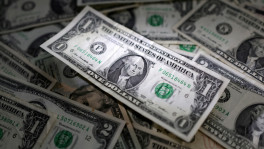Remittance inflow sees 11% growth in FY20
The strong remittance inflow significantly contributed to the foreign exchange reserve of the nation, taking it to a record $36.14 billion

Remittance still standing strong
- $18.20bn total remittance received in FY20
- $1.83bn single-month highest remittance received in June
- $36.14bn in foreign exchange reserves as of July 2
- Pandemic could affect remittance in coming months
- Oil price shocks might cause volatility in our remittance inflows
Despite all economic indicators being in a downwards trend, remittance inflow has kept its strong pace backed by the 2 percent cash incentive, registering 11 percent growth in the just concluded fiscal year.
The country received $18.20 billion in remittance in the 2019-20 fiscal year, compared to $16.41 billion in the 2018-19 fiscal year, according to Bangladesh Bank data.
The last month of FY2019-20 received the highest single-month remittance in Bangladesh's history.
In June, expatriates sent $1.83 billion as remittance to the country. The second-highest amount of remittance received in a month was $1.74 billion in June last year, according to central bank data.
The strong remittance inflow significantly contributed to the foreign exchange reserve of the nation, taking it to a record $36.14 billion as of July 2.
However, remittance inflow initially began slowing down from January this year. The pandemic worsened the situation as it forced job cuts in the global labour market.
In April, remittance inflow tumbled by 34 percent, prompting the central bank to take measures to restore growth.
As a part of that effort, the Bangladesh Bank widened the cash incentive facility and enhanced the paper-free incentive receivable limit.
In May, the central bank enhanced paper-free incentive receivable limit against inward remittance to $5,000 (about Tk5 lakh) from the previous $1,500 (around Tk1.5 lakh).
This measure reflected positively on remittance inflow in June.
In March, the Bangladesh Bank widened the range of getting cash incentives, including foreign offices of the country's airlines or shipping companies or a local mariner or aircraft pilot working at a foreign shipping company or airlines.
The government announced 2 percent cash subsidy in the budget in the last fiscal year, which has been included in the budget for the 2020-21 fiscal year as well.
Although these efforts have kept remittance inflow strong up until now, the Bangladesh Bank sees the pandemic affecting remittance in the coming months.
In its financial stability report for 2019, the central bank raised concerns, saying, "With the onset of Covid-19 since early 2020, prices have been in sharp decline.
"From the import point of view, the global oil price situation might provide some comfort to Bangladesh. However, a potential threat might come as remittance inflows from the oil-exporting countries – especially from the Gulf countries – would face significant adverse shocks."
The report said around 55 percent of our remittance comes from countries which are major oil suppliers in the world market. Therefore, oil price shocks are more likely to cause volatility in our remittance earnings.
The Bangladesh Bank in its report suggested that the overseas labour market in the non-oil economy should be sought out to ensure a hedge against global fuel price shocks.
The report said the top five remittance sources for Bangladesh in 2019 were Saudi Arabia, the UAE, the US, Kuwait and Malaysia. These countries also experienced slower economic growth in 2019.
If this trend continues as projected by the IMF in its World Economic Outlook, then overseas employment risk, as well as remittance risk for the Bangladeshi economy, may inflate.


 Keep updated, follow The Business Standard's Google news channel
Keep updated, follow The Business Standard's Google news channel
















